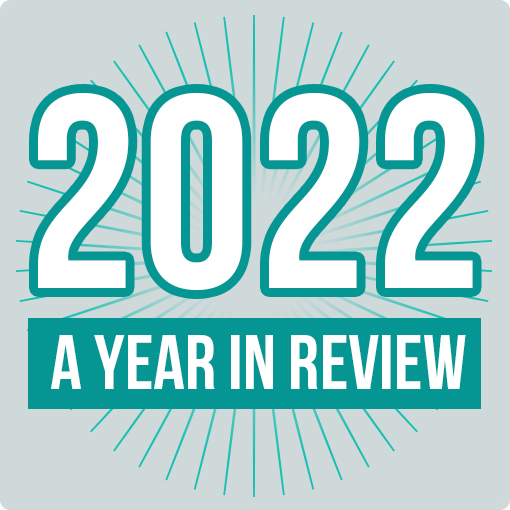One of the email marketing “silver bullet” questions I frequently get asked is – “When is the best day and time of day to send my next email campaign?” It’s a good one to ask. Just imagine all the wasted time and energy if a campaign bombs just because it was launched at the wrong time.
The common “consultant speak” answer to this is “when your audience are the most motivated to take the action you want”. No real insight there. The practical answer is “you will need to test – but it usually pays to steer clear of the very start and the very end of the week”. A better response; however, for one sizable market segment, this is still bad advice.
Want to know if you’re in this market segment? Just take a peek at your website stats.
Have a look at the visitor count graph below.
Now look at this one.
And if you are still with me – the last.
As you can see, the first two have very similar shapes even though they are from completely different companies – in even more different markets. However, the third graph has an entirely different shape from the first two. The only similarity between the three is that they are all from businesses based in Auckland – and they all work with Permission.
So what makes shape one and shape two look so similar? Well, before I answer this, have a look at this final graph to follow. (I promise there’s no more after this.)
As you can see, this is not from a website but from part of a research document from McGill University researcher, Debbie Moskowitz. This one tracks the energy levels individuals have during the week.
From her research, she has found that Monday is a great day for setting goals, organising and planning. Your energy levels are not fully back from a weekend off and these tasks are a nice fit for this space as you start to pick up speed. Whereas on Tuesday you are back into action at full steam. This is a day for taking on all those tough tasks that you have been putting off for too long. The head of steam of Tuesday carries across to Wednesday, another good day to crank into things that are really hard to do. By the time you hit Thursday, things start to slow down and energy levels begin to fade. Friday carries on this trend and after lunch is not the time to try anything too taxing.
Now, lets go back to those earlier website visitor charts and the question of why the first two are similar. Both businesses have one thing in common – they each sell their products direct to consumers and have predominantly female buyers. I’m not yet convinced that the gender skew is pushing these shapes to look the way they do. Nevertheless, in both, the early part of the week – especially Monday – is when things really start to happen.
This matches nicely with Debbie’s research. I’m taking a massive leap in logic by connecting the two but there could be a natural sequence of events playing out online. This is how it could run. During the last part of the weekend you think about what’s still on your to-do list. Perhaps you discuss it with your partner and both plan to get things underway on Monday. So you head to work and hit Google as your energy levels are still too low to do any serious work. You find what you are searching for and start browsing and picking. If time gets away on you then perhaps on Tuesday you could spare some extra time to tick this task off your list. But after that, well, then the week gets away on you and all the normal “stuff” that fills the days just takes over. That is until the weekend comes around and that “to-do” list rears its ugly head again.
The website traffic maps this behaviour. It rises sharply at the start of the week, then drops like a stone – only to come up again the following week. It’s a very choppy wave pattern. But what about the third graph? Why the stark difference between this one and the first two?
Well, this graph is from a business-to-business operation that sells a technical product that requires some careful consideration prior to purchase. This is normally a work-focused “to do” that has the whole week to be ticked off. Which means that demand rises slowly on Monday then sits up there at a relatively flat status – almost like a “table top” shape – before it gradually falls for the weekend.
So how does all this apply to your business?
Well, best you check out your website visitor graphs and see what shapes they are. Are your waves choppy or rolling with flat mid sections? If it’s the first of the two then it may pay to add these few things to your action list. (Best to nail them on Monday or Tuesday…)
Firstly, just realising that your website traffic does come in ragged weekly cycles and not flat, even streams is a good step in itself. Now you can see the need to grab as much early week traffic as you can. So if you are buying advertising – say from Google with their AdWords program – it may pay to front load your ad spend so that you free up as much budget as you can to capture the rise in early week traffic that your market presents.
Secondly, your copy may need a tweak or two. One of the great copy writers – Robert Collier – talked about entering the “conversations in their mind” of your prospects. Part of this conversation could include thoughts like “removing the task from my to-do list” or “taking the first step to getting this nailed” or maybe even ”finally making time to…” And, if you want to be really smart, you could split-test your website page so that the copy changes for those early weekdays to include text about “Starting the week with one less thing to do.”
Thirdly, don’t forget how this affects your other advertising channels too. So, placing radio advertising early on in the week rather than later would be well worth a test. The same would apply to any print media you may be running.
And finally, there’s the overall sales importance of those early days of the week. It’s a time when there’s a heightened chance that prospects are in a decision-making mindset. So releasing your email marketing on a Monday afternoon or a Tuesday morning to capture the energy here could be a good idea. And sales follow-up calls should be scheduled into this space.
It really all boils down to understanding and then capitalising on the changing energy levels of your prospect audience and how this affects your chance to present your wares online. Your website visitor graphs provide an insight into how yours operate. Why not check them out today and see what your shapes look like?






